
by admin | Mar 27, 2025 | Mesenchymal Stem Cells, Spinal Cord Injury, Stem Cell Research, Stem Cell Therapy
Spinal cord injury (SCI) is a devastating condition that causes severe nerve damage, leading to impaired movement, sensation, and bodily functions. The injury sets off a series of damaging processes, including excessive inflammation, loss of essential nutrients, and scar tissue formation.
These factors prevent the regeneration of nerve cells, making recovery difficult. Traditional treatments provide limited improvement, but recent research by Lui et al. suggests that mesenchymal stem cells (MSCs) offer hope for patients with SCI.
How SCI Disrupts the Microenvironment
Following SCI, the body experiences a host of negative effects. Initially, the injury causes direct damage to nerve cells, leading to inflammation and the release of harmful substances.
The body’s attempt to repair the damage often backfires, as excessive inflammation worsens tissue destruction and inhibits nerve regeneration. Additionally, the blood-spinal cord barrier (BSCB) becomes compromised, allowing immune cells to flood the injured site.
These immune cells produce harmful molecules like reactive oxygen species (ROS) and cytokines, further aggravating the damage.
The prolonged inflammation creates a hostile environment that prevents new nerve growth and leads to the formation of scar tissue that blocks potential regeneration.
The Role of MSCs in Repairing the Spinal Cord
The ability of MSCs to repair spinal cord injuries (SCI) lies in their powerful secretions of bioactive molecules, which help regulate inflammation, promote nerve cell survival, and enhance tissue repair.
MSCs suppress harmful immune responses by decreasing the activity of pro-inflammatory cells like T-cells and macrophages while promoting anti-inflammatory pathways to minimize further nerve damage. They also release neurotrophic factors that nourish and support nerve cells, encouraging the survival and growth of new neurons to improve recovery.
Additionally, MSCs help prevent the formation of dense glial scar tissue, which can obstruct axon regrowth, by regulating proteins like MMP-2 and BDNF that break down scar tissue and create space for new nerve connections. Furthermore, MSCs contribute to angiogenesis, promoting blood vessel growth to ensure that the injured site receives adequate nutrients and oxygen for healing.
Optimizing MSC Therapy for SCI
To ensure MSC therapy is effective for SCI treatment, the authors call for additional research to determine the most efficient timing, dosage, and delivery method.
Timing for MSC Transplantation
Studies suggest that MSCs work best when introduced during the subacute phase (approximately two weeks after injury). This timing allows MSCs to reduce inflammation while the injury is still healing. If administered too early, the highly inflammatory environment may kill MSCs before they can have a therapeutic effect. If given too late, scar tissue may already be well established, limiting their benefits.
Optimal Dosage
According to Liu et. al, research on animals suggests that higher doses of MSCs (greater than one million cells) lead to better functional recovery.
However, an excessively high dose might provoke an unwanted immune response. In humans, doses typically range from 10 to 100 million cells, though further research is needed to determine the optimal amount.
Optimizing MSC Delivery for Spinal Cord Repair
MSCs can be delivered in different ways. Intravenous (IV) injection is the least invasive, but many cells get trapped in organs like the lungs before reaching the spinal cord. Direct injection into the injury site is more targeted but carries risks of additional damage. Intrathecal injection (into the spinal fluid) is a promising middle ground, as it allows MSCs to circulate in the cerebrospinal fluid and reach the injury without additional trauma.
Advancing MSC Therapy for Spinal Cord Injury: Challenges and Future Prospects
Although MSC therapy holds great promise, several challenges remain before it can become a routine treatment for SCI. Researchers need to refine techniques for improving MSC survival, homing (their ability to find the injured site), and integration into the spinal cord. Scientists are also exploring genetic modifications and biomaterial scaffolds to enhance MSC effectiveness. Additionally, large-scale clinical trials are necessary to confirm safety and efficacy in human patients.
In the future, personalized MSC therapy – where treatment is tailored to each patient’s specific injury and biological factors – could revolutionize SCI treatment.
Liu et al. conclude that ongoing advancements in stem cell research, MSC transplantation has the potential to improve the quality of life for SCI patients by restoring lost function and promoting recovery in ways that were once thought impossible.
Source: Liu, Y., Zhao, C., Zhang, R. et al. Progression of mesenchymal stem cell regulation on imbalanced microenvironment after spinal cord injury. Stem Cell Res Ther 15, 343 (2024). https://doi.org/10.1186/s13287-024-03914-x

by admin | Mar 18, 2025 | Mesenchymal Stem Cells, Spinal Cord Injury, Stem Cell Research, Stem Cell Therapy
Spinal cord injury (SCI) can lead to lasting health challenges, impacting motor, sensory, and autonomic functions. Recovery from such injuries is particularly difficult due to the central nervous system’s limited ability to repair itself. As a result, scientists have turned to stem cell therapies, particularly mesenchymal stem cells (MSCs), as a potential solution to help treat traumatic spinal cord injuries (TSCI).
In this review, Montoto-Meijide et al. explore the role of stem cell therapy in TSCI treatment, the safety and efficacy of MSCs, and the ongoing research aimed at improving these therapies.
Spinal Cord Injury and the Need for Effective Treatments
A spinal cord injury results from trauma that damages the spinal cord, leading to various degrees of paralysis and loss of sensory functions. Recovery is limited because the central nervous system does not regenerate easily, meaning that cells, myelin (which insulates nerve fibers), and neural connections are difficult to restore. Traditional treatments focus on alleviating symptoms and preventing further injury, but they do not offer a cure or promote regeneration. As a result, researchers are exploring stem cell therapies, which have shown potential in regenerating damaged tissues and promoting recovery.
An Overview of Mesenchymal Stem Cells (MSCs)
Stem cells are unique in that they can self-renew and differentiate into different types of cells. MSCs are a type of adult stem cell that can develop into various cell types, including bone, cartilage, muscle, and fat cells. MSCs are particularly promising in SCI treatment because of their ability to regenerate tissues and support healing. These cells have shown anti-inflammatory, anti-apoptotic (preventing cell death), and angiogenic (promoting new blood vessel growth) properties, all of which could aid in the healing of spinal cord injuries.
There are different types of stem cells, including embryonic and adult stem cells. Each source has its advantages and drawbacks. Bone marrow MSCs are the most commonly used in research and clinical trials, but adipose tissue and umbilical cord MSCs are gaining attention due to their availability and regenerative capabilities.
The Role of MSCs in Treating Spinal Cord Injuries
MSCs offer several benefits when applied to SCI treatment. They can promote tissue repair, reduce inflammation, and enhance the formation of new blood vessels. When introduced into an injured spinal cord, MSCs have been shown to:
- Promote axonal (nerve fiber) regeneration
- Reduce inflammation around the injury site
- Support the survival of nerve cells
- Enhance the formation of new blood vessels, aiding in tissue repair
These capabilities make MSCs an exciting avenue for research into TSCI treatment. Clinical trials and studies have shown that MSCs can lead to improvements in motor and sensory functions, although the extent of these improvements varies.
Clinical Evidence and Findings
A systematic review of clinical studies involving MSCs for TSCI was conducted, analyzing data from 22 studies, including 21 clinical trials. According to the authors, these findings suggest that MSC-based therapies can lead to improvements in sensory and motor functions, although these effects are often more pronounced in sensory functions than motor functions. Improvements in patients’ ASIA (American Spinal Injury Association) impairment scale grades have been reported, indicating positive outcomes for many individuals.
The safety of MSC therapies was also a key focus of these studies. Overall, MSC-based treatments were found to have a good safety profile, with no significant adverse effects such as death or tumor formation reported in clinical trials. Some studies did report mild side effects, such as temporary inflammation or mild discomfort, but these were generally short-lived and not severe.
The Future of MSC Therapy and Other Potential Treatments
MSC therapy represents one of the most promising areas of research for TSCI, but it is not the only potential treatment. Other therapies, including gene therapies, neurostimulation techniques, and tissue engineering approaches, are also being explored to address the challenges of spinal cord injury. The authors believe these approaches could complement MSC therapies or offer new avenues for healing and recovery.
For MSC therapy to become a standard treatment for TSCI, additional research is needed. Clinical trials with larger patient groups, longer follow-up periods, and standardized protocols will be necessary to better understand how MSCs can be used most effectively in treating spinal cord injuries. Additionally, researchers are exploring the best stem cell sources, optimal timing for treatment, and the ideal dosage to maximize benefits.
A Promising Future for Spinal Cord Injury Treatment
While spinal cord injuries are currently devastating and challenging to treat, stem cell therapy, particularly with MSCs, offers a hopeful future. Early studies suggest that MSCs can help promote tissue repair, reduce inflammation, and improve motor and sensory functions, although further research is needed to confirm these findings and explore long-term effects. The scientific community continues to make strides in understanding how MSCs and other therapies can help people with TSCI recover and regain functionality, offering hope for the future.
Source: Montoto-Meijide R, Meijide-Faílde R, Díaz-Prado SM, Montoto-Marqués A. Mesenchymal Stem Cell Therapy in Traumatic Spinal Cord Injury: A Systematic Review. Int J Mol Sci. 2023 Jul 20;24(14):11719. doi: 10.3390/ijms241411719. PMID: 37511478; PMCID: PMC10380897.

by admin | Mar 4, 2025 | Exosomes, Spinal Cord Injury, Stem Cell Research, Stem Cell Therapy
A spinal cord injury (SCI) is a serious condition that affects the central nervous system, leading to loss of movement, sensation, and bodily functions below the site of the injury. SCI is not only life-changing for those affected but also presents a significant burden on healthcare systems worldwide. Each year, thousands of people experience SCI due to accidents, falls, or medical conditions, and unfortunately, there is currently no way to fully restore lost function.
After an SCI occurs, the damage progresses in two stages: primary and secondary injury. The primary injury happens immediately upon impact, causing direct harm to the spinal cord. This is followed by secondary injury, a complex process where inflammation, cell death, and scar formation make it even more difficult for the spinal cord to heal.
In this review, Yu et al. review how exosomes are prepared, their functions, administration routes, and their role in repairing SCI, including their effectiveness alone and in combination with other treatments.
Understanding Exosomes: Functions, Benefits, and Applications
Exosomes are tiny particles that cells release into their surroundings. These microscopic vesicles, which range in size from 30 to 150 nanometers, help cells communicate by carrying proteins, genetic material, and other molecules from one cell to another. Exosomes play a key role in many biological processes, including immune responses, tissue repair, and even disease progression.
According to the authors, scientists have recently begun exploring the potential of exosomes in medicine, particularly for treating spinal cord injuries. Since exosomes are naturally produced by cells and can travel throughout the body, they have the potential to serve as powerful tools for healing damaged tissues, reducing inflammation, and encouraging nerve regeneration.
How Exosomes Can Help Repair SCI
Promoting Nerve Regeneration
One of the most notable challenges in SCI recovery is nerve regeneration. Nerve cells, or neurons, do not repair themselves easily after damage. However, research has shown that exosomes may help stimulate this process. Certain types of exosomes have been found to contain molecules that encourage nerve cell growth and survival. By delivering these molecules to injured areas, exosomes may promote the repair of damaged nerves and improve functional recovery.
Reducing Inflammation
Inflammation is a major contributor to secondary injury after SCI. When the spinal cord is damaged, immune cells rush to the site, releasing chemicals that cause swelling and further harm to nerve cells. Exosomes have been shown to help regulate the immune response by reducing inflammation and preventing excessive damage. By controlling the body’s inflammatory reaction, exosomes may create a more favorable environment for healing.
Protecting Against Cell Death
After SCI, many nerve cells die due to stress and lack of oxygen. Exosomes may offer protection by delivering molecules that help cells survive. Some exosomes have been found to block pathways that lead to cell death, allowing more neurons to stay alive and functional. This protective effect could be crucial in limiting the long-term effects of SCI.
Encouraging Blood Vessel Growth
Blood flow is essential for delivering oxygen and nutrients to the spinal cord. After an SCI, blood vessels in the area may be damaged, further reducing the chances of recovery. Exosomes have been found to support the growth of new blood vessels, improving circulation to injured areas. This process, known as angiogenesis, can help supply the spinal cord with the nutrients it needs to repair itself.
Combating Oxidative Stress
Oxidative stress is another factor that worsens spinal cord injuries. It occurs when harmful molecules called free radicals accumulate and damage cells. Exosomes contain antioxidants that can neutralize these harmful molecules, protecting nerve cells from additional damage. By reducing oxidative stress, exosomes may help preserve spinal cord function and promote healing.
Using Exosomes for SCI Treatment
Direct Injection
One way to use exosomes for SCI treatment is by injecting them directly into the injured area. This method allows exosomes to reach damaged nerve cells quickly and begin their repair work. However, one challenge with this approach is that exosomes may not stay in place long enough to have a lasting effect. Scientists are working on ways to improve the stability and effectiveness of direct injections.
Intravenous Delivery
Another method is intravenous (IV) delivery, where exosomes are injected into the bloodstream. This allows them to travel throughout the body and potentially reach the spinal cord. While IV delivery is less invasive than direct injection, some exosomes may be filtered out by organs like the liver before they reach the injury site. Researchers are exploring ways to improve targeting so that more exosomes reach the spinal cord.
Exosomes Combined with Biomaterials
Scientists are also investigating the use of biomaterials, such as hydrogels, to help exosomes stay at the injury site longer. Hydrogels are soft, water-based materials that can hold exosomes in place, slowly releasing them over time. This controlled release may enhance the effectiveness of exosome therapy and provide a more sustained healing effect.
The Future of Exosome Therapy for Spinal Cord Injury
According to Yu et al. emerging research suggests that exosomes could play a crucial role in promoting healing and improving recovery.
While there are still many questions to answer and challenges to overcome, the authors conclude the potential of exosomes in medicine is undeniable. With continued research and development, exosome therapy could one day provide a groundbreaking solution for spinal cord injury patients, helping them regain function and improve their quality of life.
Source: Yu, T., Yang, LL., Zhou, Y. et al. Exosome-mediated repair of spinal cord injury: a promising therapeutic strategy. Stem Cell Res Ther 15, 6 (2024). https://doi.org/10.1186/s13287-023-03614-y

by admin | Feb 20, 2025 | Adipose, Regenerative Medicine, Spinal Cord Injury, Stem Cell Research, Stem Cell Therapy
Spinal cord injuries (SCI) are life-altering conditions with limited treatment options. While rehabilitation and medical management can provide some improvements, regenerative medicine is emerging as a promising alternative. The CELLTOP study, an on-going multidisciplinary phase 1 study conducted at the Mayo Clinic, is investigating the safety and efficacy of adipose tissue–derived mesenchymal stem cells (AD-MSCs) to aid in spinal cord recovery.
In this initial report, Bydon et al. describe the outcome of the study’s first treated patient – a 53-year-old survivor of a surfing accident who sustained a high cervical American Spinal Injury Association Impairment Scale grade A SCI with subsequent neurologic improvement that plateaued within 6 months following injury.
The CELLTOP Trial Stem Cell Treatment Process
Nine months after his injury, the patient enrolled in the CELLTOP study. An abdominal fat tissue sample was collected, and stem cells were isolated, expanded, and preserved. Eleven months after the injury, the patient received an injection of 100 million AD-MSCs through a lumbar puncture at the L3-4 level.
Safety and Tolerability: Minimal Side Effects Observed in Trial
According to the authors, the procedure was well tolerated. The only reported side effect was a mild to moderate headache on the second day, which resolved with over-the-counter medication. No severe adverse effects were observed during the 18-month follow-up.
Observed Neurological Improvements
Following the stem cell injection, the patient showed notable improvements in motor and sensory function over 18 months, including:
- Motor Function: The patient’s upper limb motor scores improved from 35 at baseline to 44 at 18 months. Lower limb motor scores increased from 36 to 49. These improvements were observed in both sides of the body.
- Sensory Function: Sensation, measured through pinprick and light touch scores, nearly doubled. The pinprick score increased from 45 to 95, and the light touch score improved from 54 to 96.
- Upper Extremity Capabilities: The patient’s ability to use his arms and hands improved significantly, particularly in tasks requiring pulling, pushing, and finger dexterity.
- Quality of Life: The patient’s physical and mental health scores improved, as measured by the Patient-Reported Outcomes Measurement Information System (PROMIS) questionnaire.
Observed Improvements in Physical Therapy Performance
Over the 18-month follow-up, the patient also demonstrated significant progress in mobility and strength, including:
- His walking speed improved from 0.17 m/s to 0.43 m/s.
- Walking distance increased from 635 feet in 12.8 minutes to 2200 feet in 34 minutes.
- Shoulder flexibility improved, with greater range of motion in both arms.
- Grip strength and hand dexterity showed notable gains.
How Stem Cells Aid in Spinal Cord Repair
SCI leads to significant nerve damage and scarring that inhibit natural healing. Stem cells offer potential benefits by:
- Reducing Inflammation: AD-MSCs have anti-inflammatory properties that may create a more favorable environment for nerve regeneration.
- Promoting Tissue Repair: These cells can support the growth of new nerve cells and blood vessels, enhancing recovery.
- Enhancing Neuroprotection: Stem cells may help preserve existing nerve function and prevent further deterioration.
Future Prospects of Regenerative Medicine for SCI
While this case study presents promising results, further research is necessary. The CELLTOP study continues to evaluate the effectiveness of stem cell therapy in more patients. Future related studies will explore optimal dosing, timing, and potential combination therapies to enhance recovery further.
Based on these initial results, the authors conclude that regenerative medicine -particularly stem cell therapy – holds significant promise for treating SCI. The first patient in the CELLTOP study demonstrated meaningful neurological improvements, suggesting that AD-MSC therapy could offer new hope for those with SCI. Continued research and clinical trials will determine whether this treatment can become a standard option for spinal cord injury recovery.
Source: Bydon M, Dietz AB, Goncalves S, Moinuddin FM, Alvi MA, Goyal A, Yolcu Y, Hunt CL, Garlanger KL, Del Fabro AS, Reeves RK, Terzic A, Windebank AJ, Qu W. CELLTOP Clinical Trial: First Report From a Phase 1 Trial of Autologous Adipose Tissue-Derived Mesenchymal Stem Cells in the Treatment of Paralysis Due to Traumatic Spinal Cord Injury. Mayo Clin Proc. 2020 Feb;95(2):406-414. doi: 10.1016/j.mayocp.2019.10.008. Epub 2019 Nov 27. PMID: 31785831.

by admin | Jan 3, 2025 | Adipose, Mesenchymal Stem Cells, Spinal Cord Injury, Stem Cell Research, Stem Cell Therapy
With over 290,000 people in the United States living with SCI and with roughly 17,000 new cases each year, spinal cord injury (SCI) is a serious condition that significantly impacts the lives of those affected.
Considering the complexity associated with SCI, current treatments for SCI continue to focus mainly on managing symptoms and providing physical rehabilitation. However, recently there has been growing interest in exploring the potential of regenerative medicine, particularly stem cell therapy, for treatment of SCI.
Bydon et al.’s Phase I clinical trial explored the safety of injecting autologous adipose-derived mesenchymal stem cells (AD-MSCs) into the spinal fluid of patients with traumatic spinal cord injury (SCI).
The study successfully manufactured and administered the stem cells to all patients without any serious adverse events (AEs). Although some non-serious AEs, including headache and musculoskeletal pain, were observed, none of the patients were excluded from the study as a result.
At the conclusion of this study, the authors found that several participants showed improvements in sensory and motor functions, as assessed by the American Spinal Injury Association (AIS) impairment scale.
Previous research has indicated that mesenchymal stem cells (MSCs) might aid in neurogenesis, angiogenesis, immune regulation, and neuronal plasticity. AD-MSCs, in particular, are advantageous due to their ability to regenerate nerves and blood vessels, their ease of extraction, and availability.
This study’s findings align with earlier studies, which also reported no serious AEs from intrathecal AD-MSC injections in SCI patients. Similar safety profiles were observed in studies involving other neurodegenerative diseases like amyotrophic lateral sclerosis (ALS) and multiple sclerosis.
Bydon et al.’s reported changes in MRI scans following the stem cell injections as part of this study. Previous studies have reported mixed conclusions on whether these changes are linked to neurological decline. Some suggest that these MRI findings could be due to inflammation from the stem cell treatment, potentially leading to nerve root compression. However, in this study, the authors found that these MRI changes did not correlate with neurological deterioration, indicating that they might be benign reactions.
While some patients showed improvements in their AIS grades, the authors caution that these findings should be carefully interpreted due to the limitations associated with this Phase I trial, including the lack of a control group.
Bydon et al. call for future larger-scale, randomized controlled trials to conclusively determine the benefits of AD-MSC injections. Additionally, they recommend expanding the study to include a broader range of cytokines and immunomodulatory markers to provide a deeper understanding of the stem cells’ mechanisms.
The authors conclude that this trial demonstrated the safety of intrathecal AD-MSC injections in SCI patients, with no serious AEs reported. Seven out of ten patients showed improvements in their AIS grades. These results encourage further research to evaluate the impact of AD-MSCs on neurological outcomes and to explore their potential in aiding late-stage recovery in SCI patients.
Source: Bydon M, Qu W, Moinuddin FM, Hunt CL, Garlanger KL, Reeves RK, Windebank AJ, Zhao KD, Jarrah R, Trammell BC, El Sammak S, Michalopoulos GD, Katsos K, Graepel SP, Seidel-Miller KL, Beck LA, Laughlin RS, Dietz AB. Intrathecal delivery of adipose-derived mesenchymal stem cells in traumatic spinal cord injury: Phase I trial. Nat Commun. 2024 Apr 1;15(1):2201. doi: 10.1038/s41467-024-46259-y. Erratum in: Nat Commun. 2024 Jun 5;15(1):4799. doi: 10.1038/s41467-024-48979-7. PMID: 38561341; PMCID: PMC10984970.

by admin | Mar 14, 2024 | Spinal Cord Injury, Mesenchymal Stem Cells, Stem Cell Research, Stem Cell Therapy
Nerve damage resulting from spinal cord injury (SCI) often leads to temporary or permanent loss of function and contributes to poor quality of life. Most common among males below 30 years of age, SCI recovery has been limited specifically as a result of the low growth capacity of neurons and a lack of nerve growth factors.
While current SCI treatment focuses on stabilizing the injured area and preventing secondary injury through a combination of surgery, pharmacological intervention, and rehabilitation, the success of treatment has been limited and unable to stimulate spinal cord regeneration.
Considering the limited success of confidential SCI treatments, several types of stem cells are currently being tested for the treatment of SCI, including mesenchymal stem cells (MSCs) isolated from bone marrow (BMSCs), umbilical cord (UC-MSCs), and adipose tissue (ADSCs).
In this review, Liau et al. discuss the current status of MSC therapy for SCI, criteria to consider when applying MSC therapy, and review novel biological therapies that can be used together with MSC therapy to enhance its therapeutic potential.
Based on the results of clinical trials, the authors conclude that MSC therapy is beneficial for SCI patients. While not all patients responded to MSC therapy, the authors note that observed improvement varied from patient to patient. In addition to discrepancies attributed to patient variations, source of MSC, route of stem cell administration, timing of cell administration, number of cell administrations, number of cells administered, and cell preparation methods were also observed to affect the efficacy of therapy.
Despite the delayed progress in phase III trials, there are several new therapeutic treatment strategies that incorporate stem cell secretory product-based therapy, including stem cell secretome therapy, scaffold-based therapy, and immunotherapy. The authors indicate that all of these novel therapeutic approaches may be able to be used in combination with MSC therapy to enhance the therapeutic efficacy of MSCs by improving cell survival, migration, engraftment, and proliferation.
The authors conclude this review by summarizing that, to date, MSC therapy has been demonstrated to be safe but unable to improve neurological function for all treated patients. Despite the limited success of this therapy, other studies are currently underway in an effort to improve the delivery of MSCs and MSC-derived products by utilizing scaffolds or by combining them with immunotherapy to improve the efficacy of the treatment.
Source: “Treatment of spinal cord injury with mesenchymal stem cells – NCBI.” 22 Sep. 2020, https://www.ncbi.nlm.nih.gov/pmc/articles/PMC7510077/.
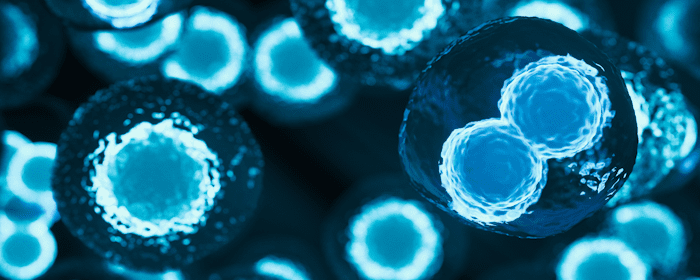


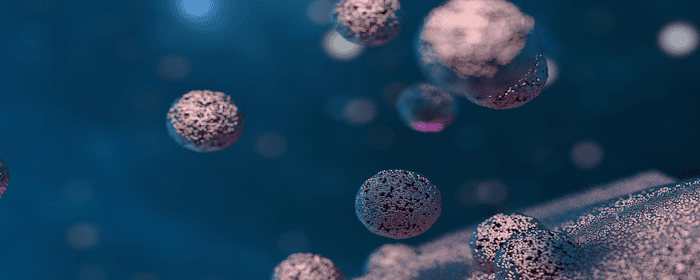
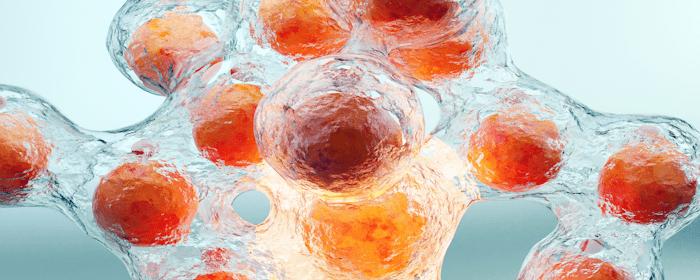
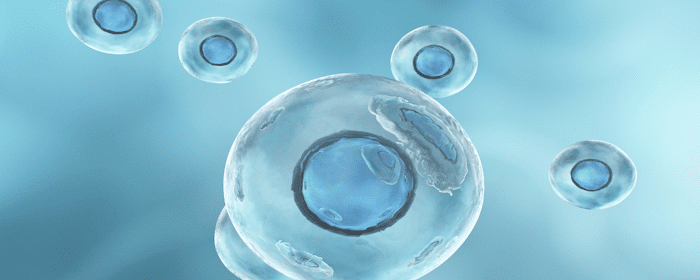
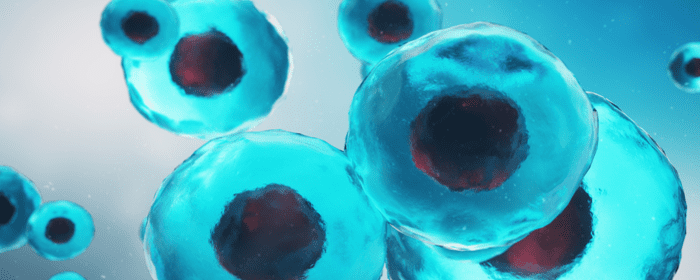
 St. Petersburg, Florida
St. Petersburg, Florida
